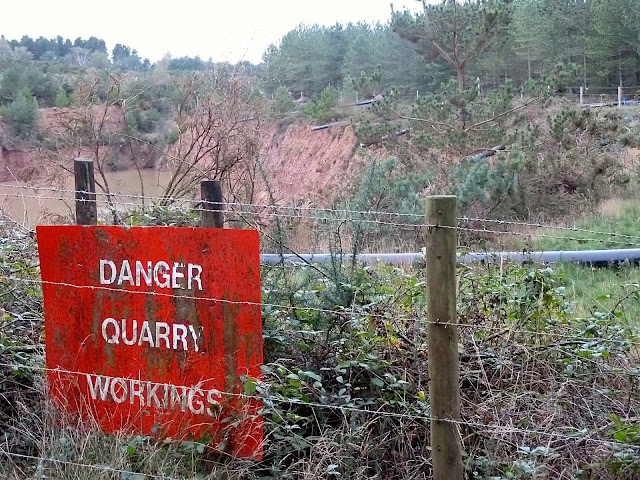Stories abound of birds threatening the safety of aircraft. Stories also abound of birds being routinely culled because of this - 25,000 geese culled annually in the US, 10,000 geese gassed in Holland this year, 2000 gulls in Lancashire, endangered birds shot in France, a couple of thousand starlings each year in Seattle, black swans in New Zealand, even snowy owls, the list goes on. However, beyond the politics and conservation concerns, some argue that culls are ineffective:
There is growing agreement among aviation experts & biologists that killing geese & other birds has no long-term impact in reducing the risk of bird strikes and may exacerbate existing threats by creating vacant desirable habitat thereby inviting other birds.
In any case, culling does not address the underlying issue - features close to airports that attract birds.
Aggregate Industries, in its plans for Straitgate Farm, doesn’t see that "wetland and open water habitats” immediately under an international flightpath are an issue - or rather, doesn't want to see. AI doesn’t want to see that creating "a priority wetland habitat and therefore [enhancing] the ecology of the area” would lead to an increased population of birds, and therefore an increased risk of birdstrike to planes using Exeter Airport. Any more birds near planes descending towards the Airport would undeniably add to the risk of birdstrike, however small. If an accident were to happen as a result, whose conscience would it be on? The council? The aggregates company? The airport? “Birdstrikes are one of the major controllable hazards to aviation”.
 |
| Holidaymakers returning to Exeter Airport, flying low over Straitgate Farm |
...if a bird strike were to lead to an accident, it is likely that there would be demands to know why the aircraft could not have been better protected against such an apparently simple, foreseeable event – bird strike is one of the few ‘single-point failures’ with the potential to cause a catastrophic accident.
One well known birdstrike incident in recent years happened in 2009. Three minutes after US Airways Flight 1549 hit birds and lost power it was in the Hudson River. Its pilot, Captain Sullenberger, was hailed a hero for saving all 155 on board. He is now an international spokesman on airline safety, but even he admits that culling birds does not address the underlying flight-risk problem.
The most effective thing to prevent these collisions is not to allow anything anywhere near an airport that's likely to be a bird attractant.
Which is why in Britain we have a 13 km safeguarding area around each airport, to "address potential bird attractant developments”:
The 13 km circle is based on a statistic that 99% of birdstrikes occur below a height 2000 ft, and that an aircraft on a normal approach would descend into this circle at approximately this distance from the runway.
Some even regard 13 km as insufficient. Straitgate Farm is 6 km from Exeter Airport. Planes landing at the airport fly directly over the farm, no more than a couple of hundred metres above. Exeter Airport is required, by law, to "take necessary steps to ensure that the birdstrike risk is reduced to the lowest practicable level”. If anybody's unsure of the extra birds a quarry might bring, take a look at the pictures of gulls at Aggregate Industries’ nearby quarries at Blackhill and Hillhead, or click on the birstrike label at the side of the page.
Town & Country Planning (Safeguarded Aerodromes, Technical Sites and Military Explosives Storage Areas) Direction 2002 makes it quite clear: "Mineral extraction and quarrying can create a bird hazard because, although these processes do not in themselves attract birds, the sites are commonly used for landfill or the creation of wetland”. At Straitgate, it's the creation of wetland that would be the problem. But this wetland, or ponding of water along the eastern boundary of the site, is the only way put forward by AI's consultants by which flooding could be controlled, and by which water supplies to people and ancient woodland would have any chance of being safeguarded.
And as yet, there's still no apparent solution to these opposing requirements, bird culls or no bird culls.















